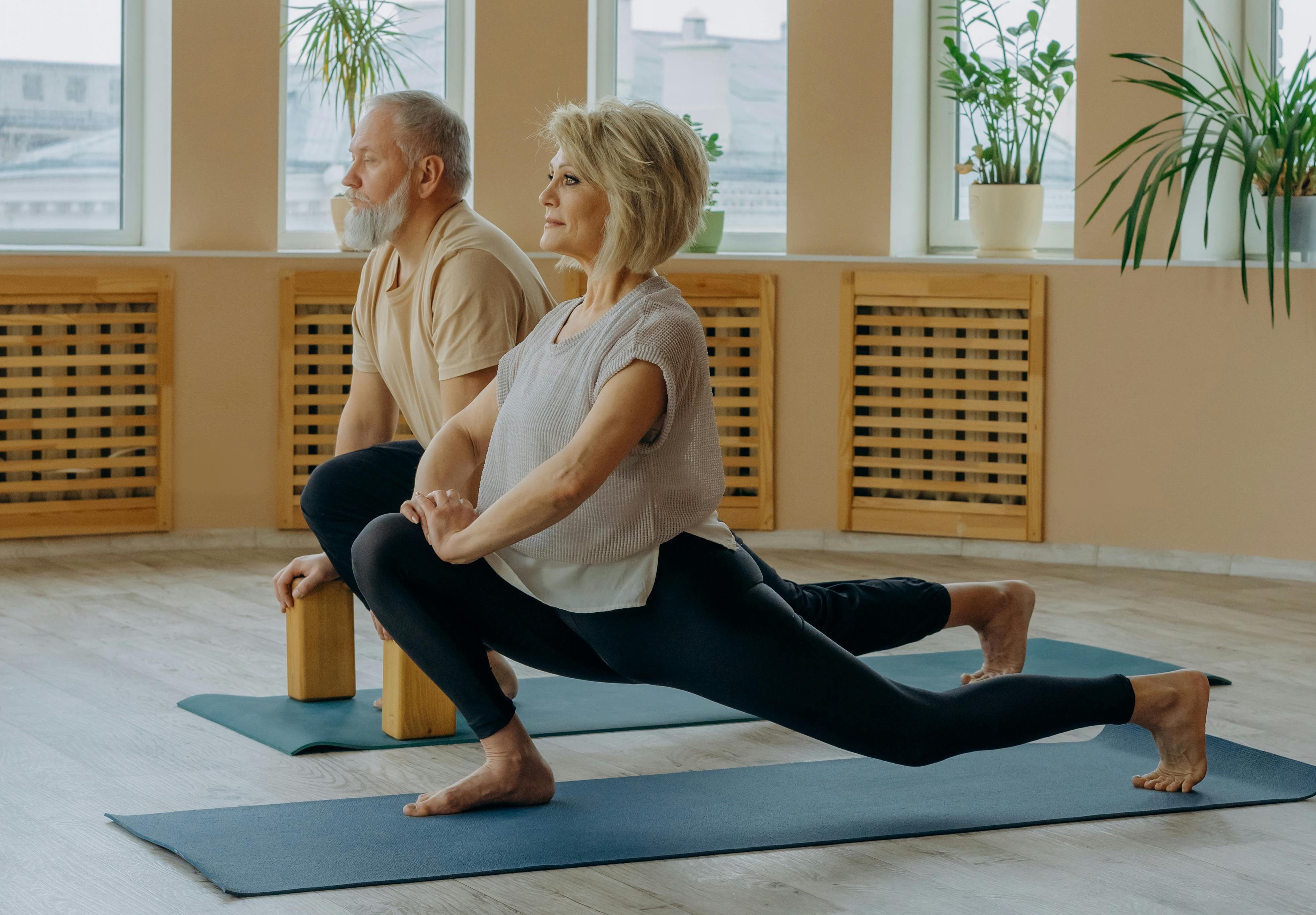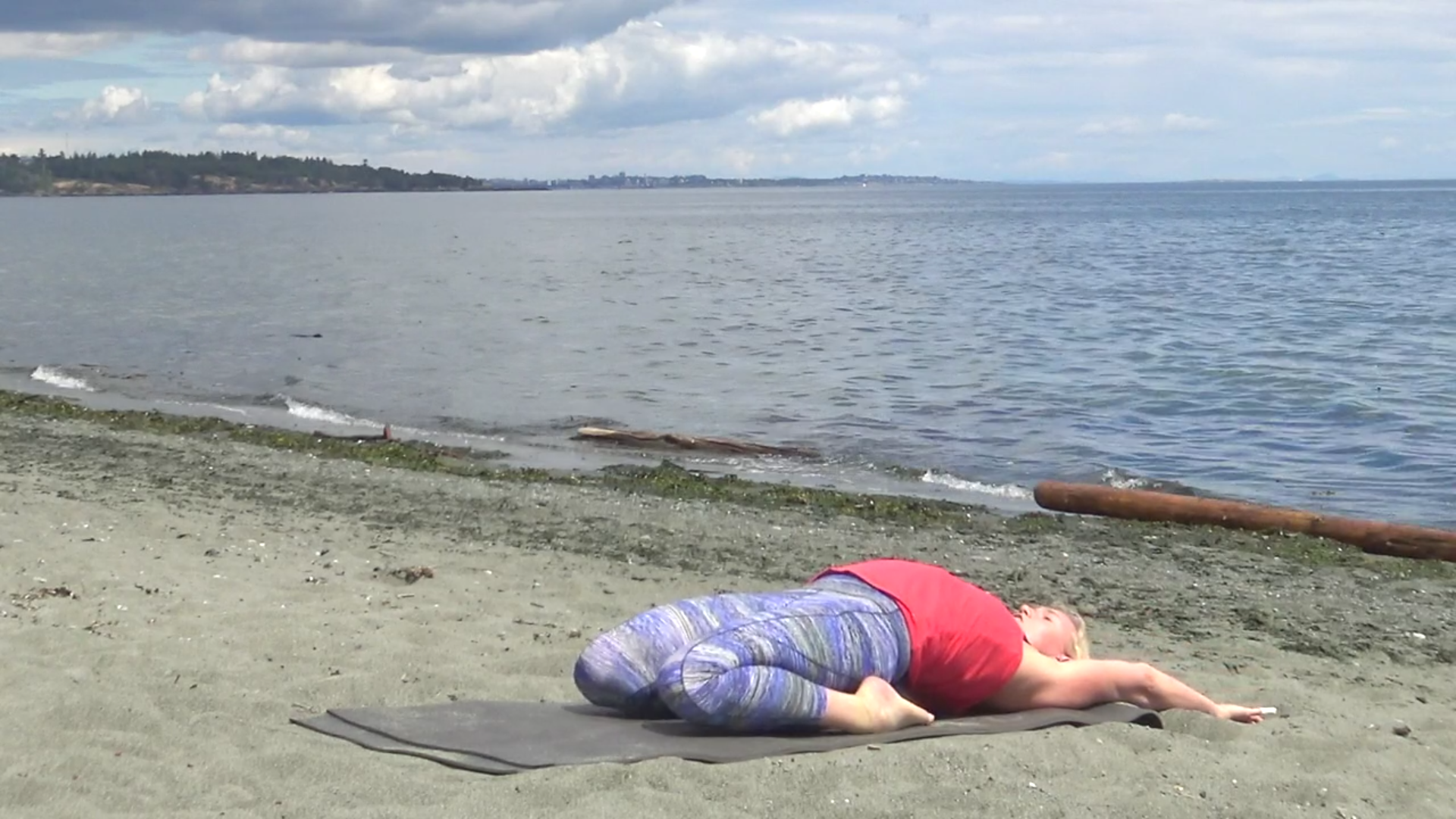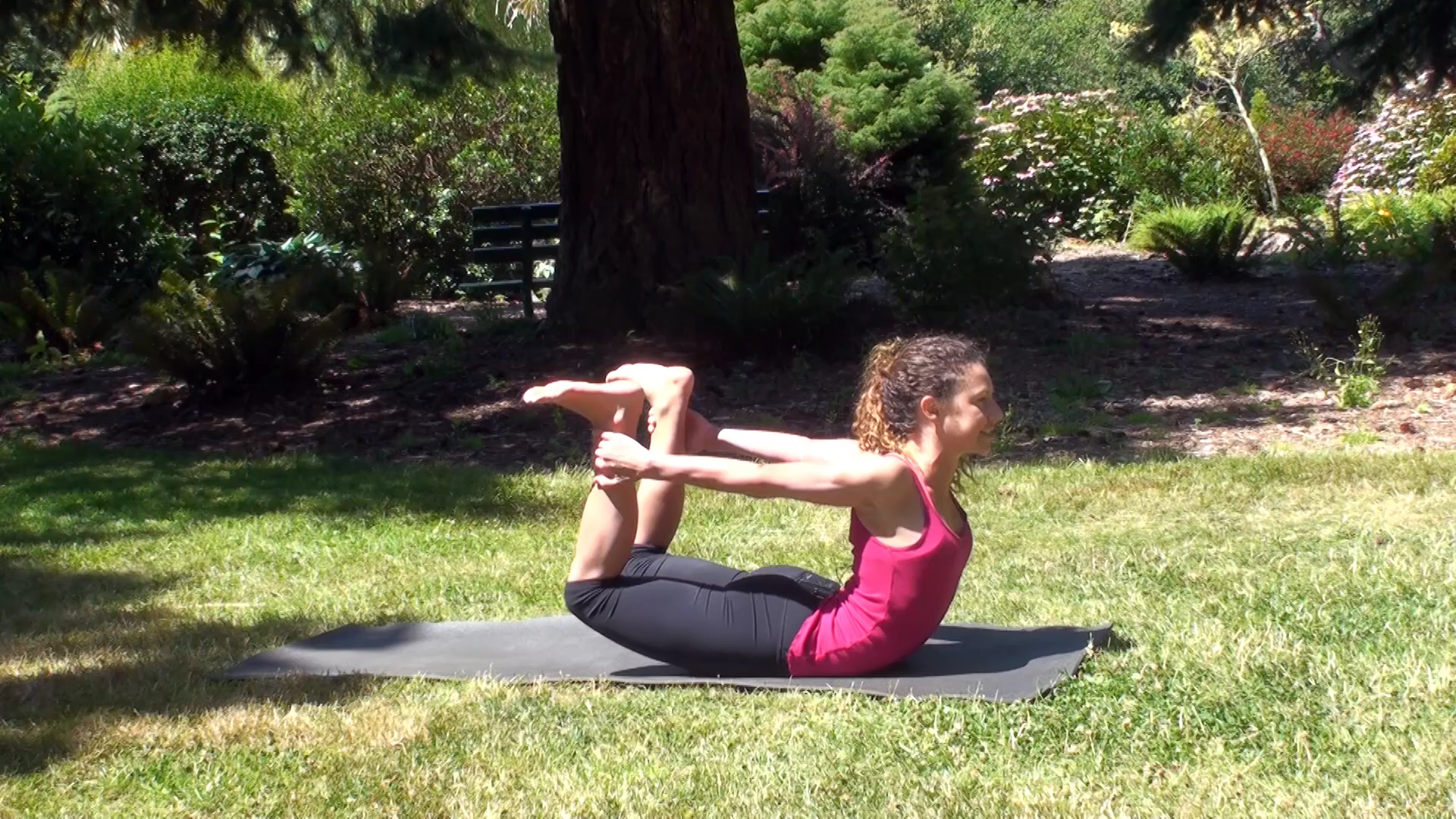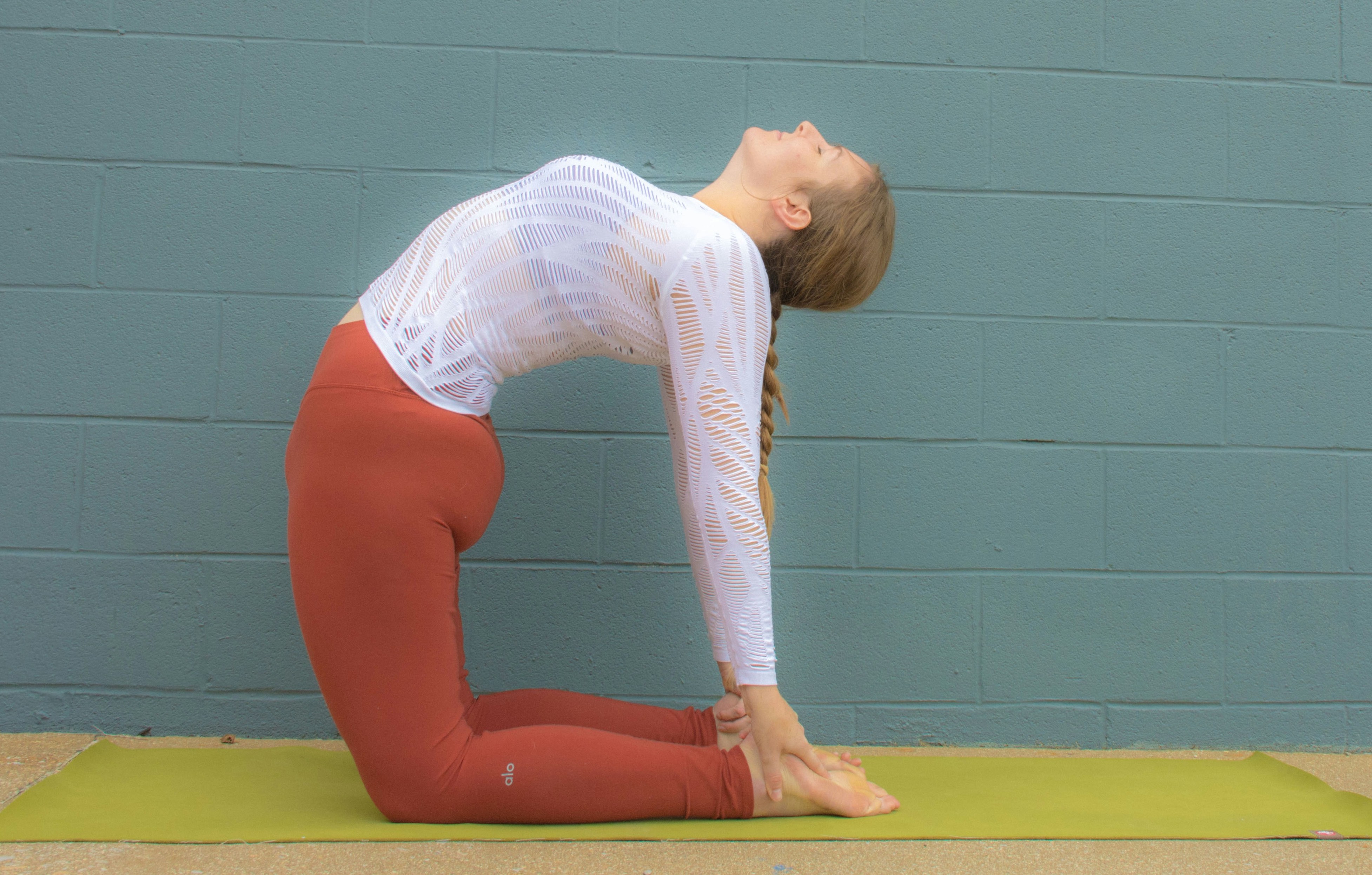People often try yoga because their muscles feel tight or they have stiff joints. One common issue under that umbrella is tight hip flexors.
Many people feel tension in the hips because of sedentary lifestyles, like working in an office or driving long distances on a daily basis. If we don’t use our hip flexors much, they become shortened and this can make them less effective, prone to injury, or tough on our posture.
On the other hand, people who use their hip flexors a lot, such as runners, dancers, and athletes, could also do with some hip stretching to keep these muscles in good condition and reduce the risk of injuries and tears.
A little context about your hip flexors and some targeted yoga poses can help you look after these muscles to improve the way they feel and perform.
What Exactly Are Hip Flexors?
Briefly, your hip flexors are muscles that flex the hip, which basically means bringing your knee nearer to your chest.
Going upstairs? Hip flexion.
Kicking a ball? Hip flexion.
The muscles that work together to facilitate this are called:
- iliacus
- psoas
- pectineus
- rectus femoris, and
- sartorius
The iliacus and the psoas are the heavy hitters. They are often grouped together and called the iliopsoas musculotendinous unit.
All five muscles help with hip flexion and also balance your posterior pelvic muscles.
Remember that everything in the body is connected, so stretching and strengthening your hip flexors can help other aspects of your body, including your posture. Looking after these muscles can additionally benefit your range of motion and balance, help release tension, and reduce the risk of injury, both on and off the mat.
Last but not least, stretching your hip flexors can feel Oh. So. Good.
Poses That Stretch Your Hip Flexors
1. Low Lunge (Anjaneyasana)

You’ve probably seen people performing lunges many times. Here’s how to do this basic stretch safely.
How to do low lunge:
- From a forward fold, step your left foot back and lower the knee to the floor or a block.
- Place both hands on your front thigh or on the floor.
- Engage your left glute.
- Push your left hip forward.
- Keep your belly tucked in and push your lower vertebrae backward.
- Shift your right knee forward into the lunge.
- You should feel a stretch in your inner left thigh and front of your hip, your psoas.
- Return to the top of the mat when ready to repeat on the other side.
Low lunge pose on DYWM
David’s Lunge (Psoas Stretch) class is a concise and precise demonstration of this common stretch, which is fantastic for awakening the dormant psoas muscle.
2. Lizard (Utthan Pristhasana)

Excellent for your hamstrings, quads, and of course, hip flexors – lizard pose also just feels great.
How to do lizard pose
- Start in downward-facing dog.
- Step your right foot forward to the outside of your right hand. Many people like to angle their foot and knee out to the side more, sometimes rolling to the outer edge of their foot.
- Lower your left knee to the mat. You can untuck your back toes, but it’s optional.
- You might lower down onto your forearms next to your front foot or use blocks. Melt your head, soften your heart.
- Return to downward-facing dog and then repeat for the other side.
Lizard pose on DYWM
In Flip Your Lizard, Jonni Lyn gives your hip flexors another stretch. This is a fun, advanced class that demonstrates a variation of this powerful pose.
3. Reclined Hero Pose (Supta Virasana)

Reclined hero pose offers a strong stretch of the hip flexors, so take it slowly and gently to find the stretch that’s comfortable for you.
How to do reclined hero pose:
- Kneel with your feet open to about mat width.
- Adjust so that your lower legs are on the outside of your upper legs, heels sliding outside your bum.
- Gently lean backward until you are resting on your elbows. If your knees come off the mat, back off; you can stop there today or grab some props.
- If comfortable, keep leaning back so your back lies on the mat or a bolster.
- Place your arms at your sides or you can try reaching back, over your head, with your arms.
An alternative is to do this pose one leg at a time, keeping the other leg extended out straight, or with a bent knee. Start reclining from this position to feel a deeper stretch in the upper leg, then switch to the other side.
Reclined hero pose on DYWM
Again, Jonni-Lyn’s focused and strong flow Jivamukti Compass includes a great example of how to move into and out of reclined hero pose.
4. Bow pose (Dhanurasana)

Your hips are in for a treat with this pose. As well as stretching out your hips, bow pose will lengthen your front body including your abs, biceps, and pecs.
Note that this pose could be tough on your back if you have very tight hip flexors, so you may decide that bow pose isn’t for you today.
How to do bow pose
- Lie down onto your belly.
- Try to elongate the space between your hips and your knees.
- Bend your knees, bringing your flexed feet toward your sit bones.
- One at a time, grab your ankles or feet. If you can’t reach, use a strap or scarf.
- Pull your legs back to lift your chest off the floor.
- Inhale as you lift your chest and thighs—it’s not how much you lift that counts but your intention.
- Open your chest by moving your shoulder blades toward each other.
- Maintain this position for several breaths.
Bow pose on DYWM
First of all, check out Fiji’s intermediate Bow Pose class for a short but detailed introduction to bow pose. If you already have good conditioning or you just want to know what getting into bow pose looks like, this might be the class for you.
For more detail, take a look at Rachel’s four-part series on bow pose.
- Bow Pose: Core Strength
- Bow Pose: Hip Flexor Release
- Bow Pose: Open the Shoulders
- Bow Pose: Ready for the Peak
5. Camel Pose (Ustrasana)

As well as a great hip flexor stretch, camel pose is a challenging back bend, so take it gently. Like bow pose, it can be tough on your back if you have super tight hip flexors, so you may want to give this one a miss or build up gradually.
How to do camel pose
- Kneel with your feet under your butt and the tops of your feet against the mat.
- Move your knees so they are about hip-width apart.
- Place your fingertips or thumbs on your lower back.
- Engage your core by drawing your low belly and ribs in, feeling control and support for your spine.
- Gently lean backward, lifting from the sternum.
- One hand at a time, reach back for your heels, or keep your hands on your back for more support.
- Gently drop your head back if it feels safe for your neck.
- Breathe.
Camel pose on DYWM
In Jivamukti Compass, Jonni-Lyn takes you through a strong, focused flow that includes some great stretches for hip flexors, including camel pose and reclined hero pose.
She has great advice for camel, demonstrating how to play a little with the pose to get a good stretch in your quadriceps.
Bonus Class
Here’s one more killer hip flexor class from the DYWM bag. Try David’s aptly-named Hip Flexor Heaven to learn why stretching out those hip flexors feels so good!
Key Takeaways for Stretching Your Hip Flexors
- Stretching your hip flexors could improve your balance and posture.
- Your hips don’t have to be tight to benefit from a good stretch.
- Bow pose, camel pose, reclined hero pose, low lunge, and lizard pose are all excellent for stretching your hip flexors.
- DYWM has many classes to help you stretch your hip flexors…
…and they will help you stretch your hip flexors safely and to a level that feels comfortable to you.
All our bodies are different, so feel free to use props or make adjustments that support your unique body.
With that in mind, please give our hip flexor classes a try and let us know how they work for you.












